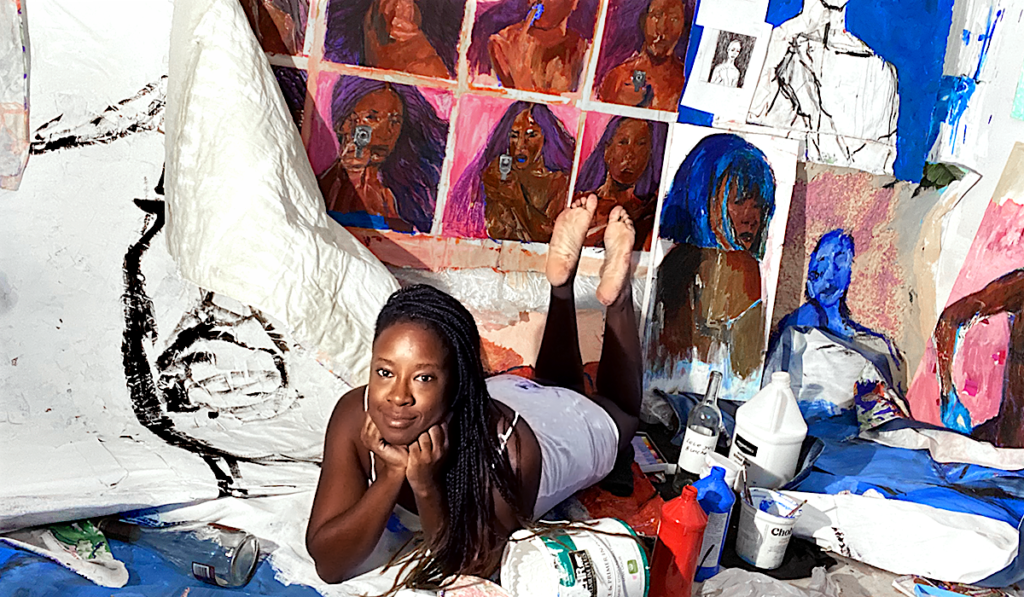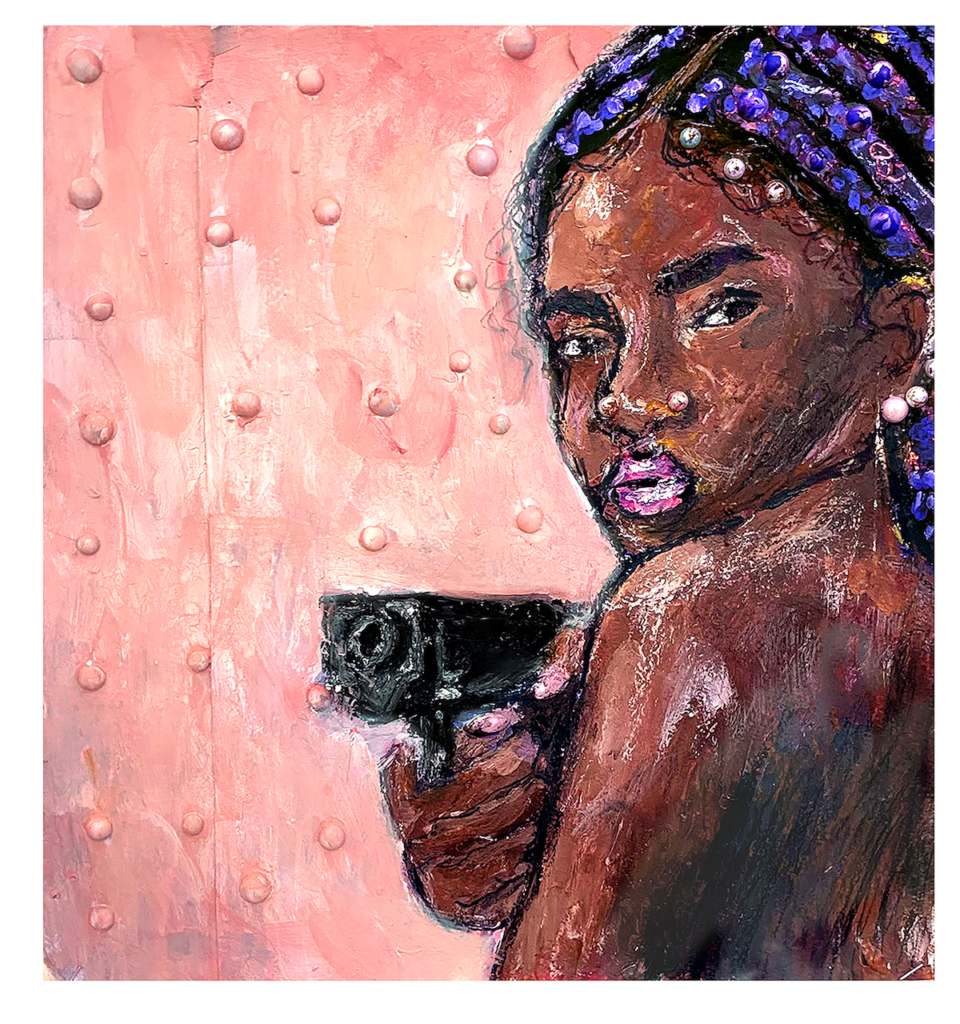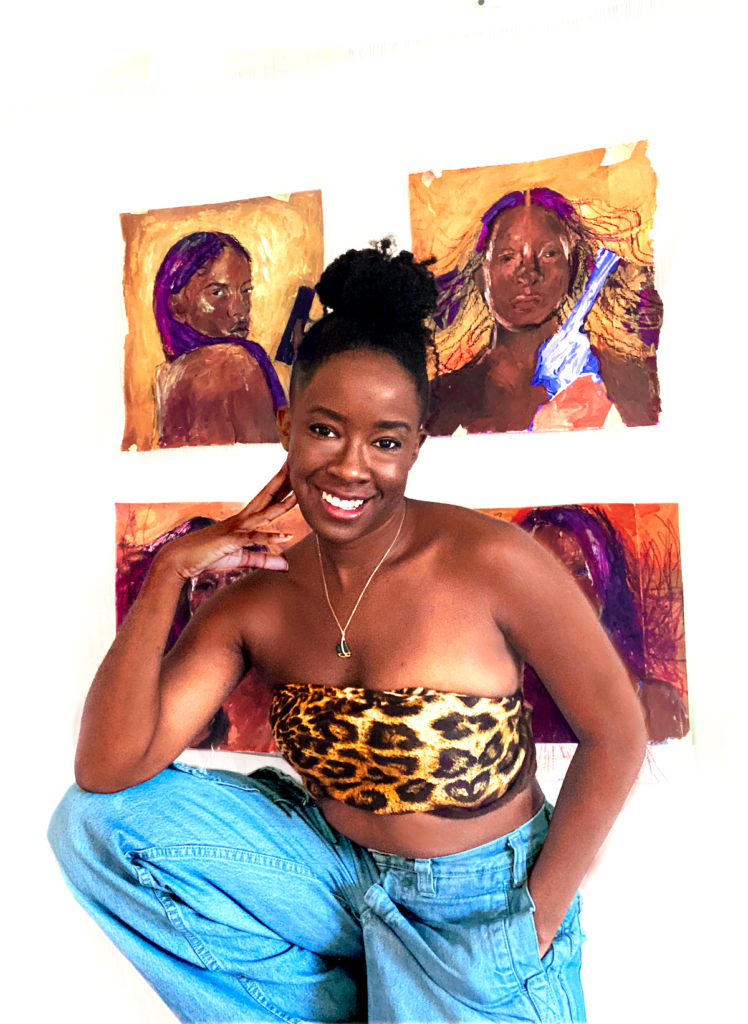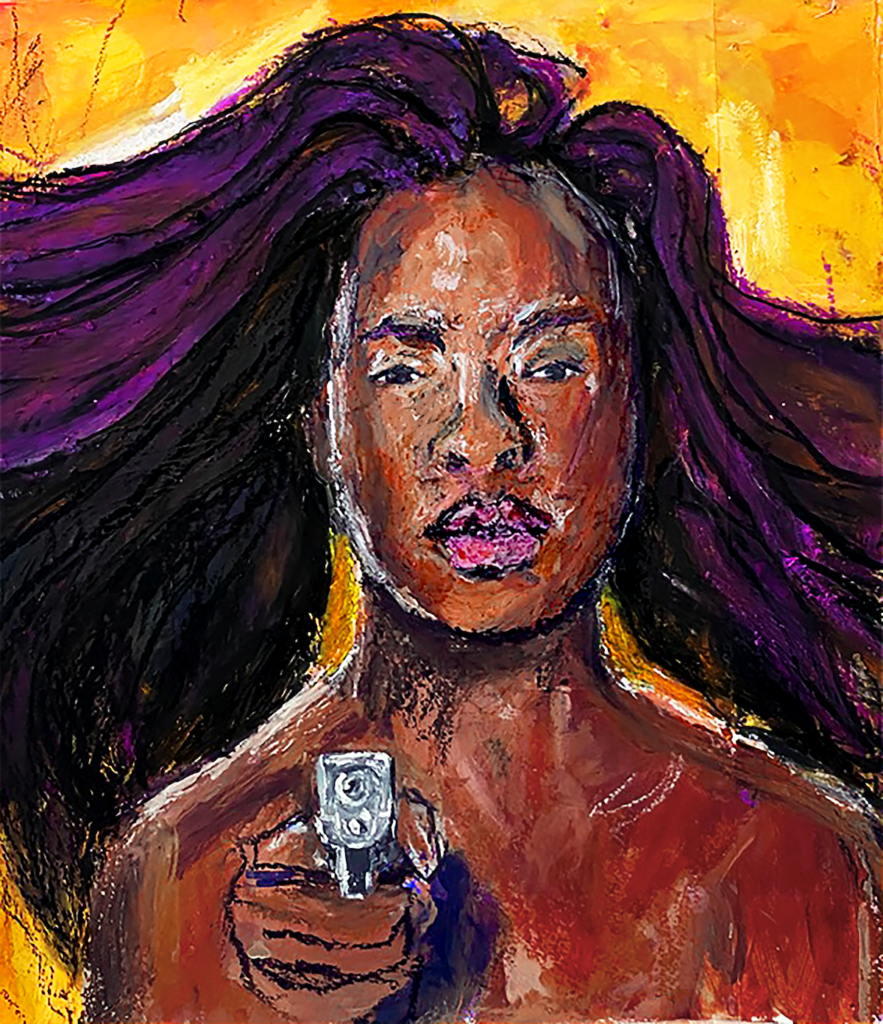Profile of the Week: Christina Nicola

Based in Brooklyn, New York, Christina Nicola is a painter and draftswoman. Her work explores the concept of “blackness”, using mix media and a variety of mark making to reveal what is under the skin’s surface. Nicola’s work confronts stereotypes and misconceptions surrounding black womxn and their sexuality.
How has your upbringing influenced you as an artist today?
I grew up in a very creative household. My paternal grandmother is an artist and my dad is a musician. While my mom is a psychologist and completely left-brained, both of their influences have shaped me into who I am today.
My dad’s dedication to his music and my mom’s entrepreneurship in opening her own practice was always this driving force that consciously and subconsciously encouraged me to eventually take a nontraditional path in life to support myself and create a place for my art. I wouldn’t be who I am today without my parents.
As I forged my path in life during and after college, there was always this pressing need to do it all myself. To work for myself, to make my own art, to believe in myself. Likewise, growing up in Miami shaped me as well. The city is an ocean of brown and black people. While it’s far from perfect, it helped strengthen my identity as an artist and a black womxn.

What challenges have you found pursuing a career in the creative industry? How did you overcome them?
The overarching challenge we all face [though creatives seem to be more cognizant of it, is finding one’s place in the world. That means the art world and life in general.
These challenges diverge into:
1. Trying to overcome the timeless dilemma of needing to make money vs. following your passion
2. Learning what to take from art school, academia, and “others’ opinions” and forging your own identity anyway
I think the path to overcoming these challenges is choosing to go your own way, even if you don’t know what that is or looks like. Being willing to bet on yourself is the key to overcoming every challenge. As long as you keep choosing yourself, you’ll find the kind of work you want to create, the reason you make it, and ultimately, the kind of artist you want to be.

How has your work evolved over time?
I’ve always been interested in mixed media work–it just speaks to me and excites me in a different way. My work has always been very explorative. From painting on plexiglass to drawing from life, my experiments in art school and beyond eventually pointed me to my approach to art: A painterly sort of draftsmanship that centers black womxn.
When it comes to the work itself, for some time after college I threw myself into very large portraits of strangers. In later years, I spent most of my time researching the “how” of my art-making, as well as solidifying my identity as an artist. Through this process, my work transitioned to include figurative narratives of myself, and my friends, as I explored my visual language for hair and skin.
This shift helps me take a closer look at myself, deepens my relationships, and allows me to form new relationships as well. This narrative-heavy transition allows me to focus more on storytelling in my newer work.
What stories or messages do you wish to tell through your creations?
My work both glorifies the black womxn while confronting stereotypes and misconceptions around the black femme body and our sexuality. The major themes I keep coming back to include challenging the Madonna-Whore Complex, exposing misogynoir, and calling out society’s hypersexualization of black womxn.
My two series Wet Dreams and Lifebloodlust, Too are two sides of the same coin. “Wet Dreams” is my love letter to black womxn as it explores black womxn reclaiming their identities and rejecting hypersexualized stereotypes of the black body. A visual narrative that depicts shifting society’s gaze, Wet Dreams centers around the rhetorical question:
“Who gets to sexualize the black body?”
Lifebloodlust, Too is a call to arms and a call to weaponize black womxnhood. What I mean by this is that one can only call to be heard, to be alive, and to be protected for so long. The desire to live freely, unfetishized, and unabused isn’t something they can give to us. We take this from them.

What project(s) are you currently working on?
I’m someone that likes to jump between multiple projects as it, ironically, helps me stay focused. Currently, I’m working on a 16-piece tapestry called “Black Joy in the Sexless Time of Black Death, dirty pigs, racism, the Black Reckoning, and the damn rona”.
Each word corresponds to the title of one of the 16 pieces. In the piece “Black Joy” and the series Lifebloodlust, Too, the gun is a symbol of self-defense and protection.
As the black body is already weaponized in the eyes of the world, I weaponze my body by taking it back. I reclaim it and it is mine to defend myself with. The idea behind the work and title of Black Joy is this:
The only way for a black person to experience black joy is to live in a constant state of watchfulness and defensiveness. Only in this state can we let our guards down, only then can we experience safety. I depict this double-edged experience in the composition of the piece itself. The womxn in the center of the piece are unarmed, posing symbolically with their middle fingers aimed as a weapon. The womxn on the edge of the grid form a well-armed militia, weapons drawn, ready to fire–protecting the ones in the center from all slides.
This work is influenced by my belief in and knowledge of self-defense. While guns are depicted here, knowing how to save your own life and the lives of others can take on many different forms.
Accompanying “Black Joy” are a series of poems. The following is an excerpt:
“What’s a pretty black girl like you need a gun for?”
It’s a solid question. Since guns are only used these days to shoot worshippers and students.
Why’s a girl like me got a gun?
If we’re going based on anything this country stands for, or pretends to believe in at least, there’s something I’ve read about the second amendment that agrees—
We have the right to a well regulated militia?
To bear arms?
…There’s something about that blackness, that black power, that black joy that is intoxicating.
Something about the beating of my heart and the warmth in my breath that makes me feel indomitable.
“What’s a black like you need a gun for?”
To make sure you keep your hands off my shit.
Gotta protect ya neck.
FRONTRUNNER online forum: @ChristinaNicola Website: https://www.christinanicola.me/ Instagram: @christina.nicola









Responses